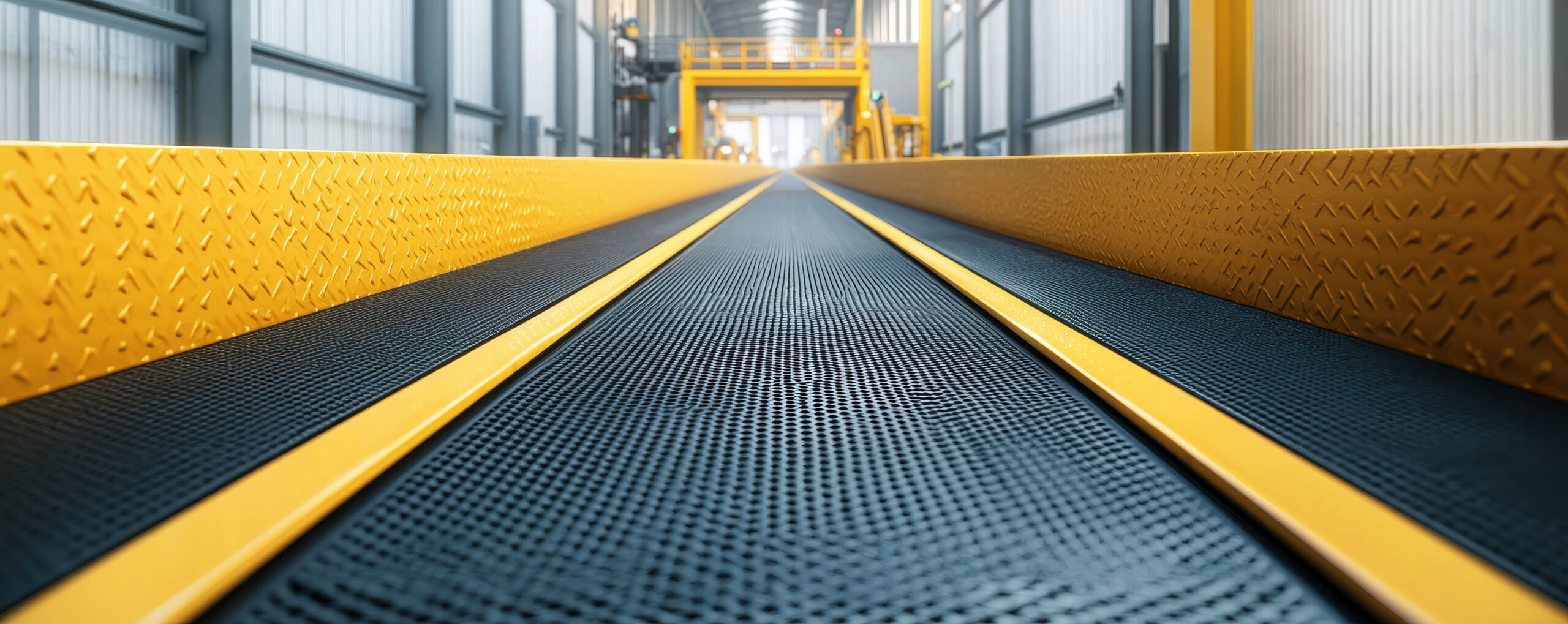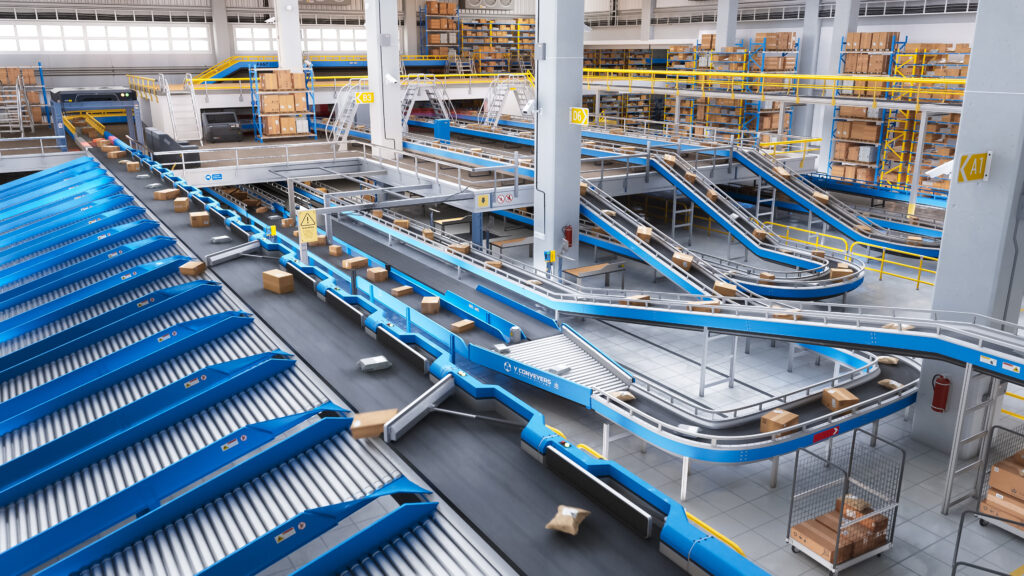Conveyor Systems for Warehouses & Order Fulfillment
Conveyor systems have become the backbone of efficient warehouse operations. These mechanical systems are designed to move goods seamlessly through various stages of handling, from storage to packing and shipping, ensuring accuracy and speed in the process.

By automating these tasks, warehouses can significantly reduce manual labor, improve productivity, and maintain consistency in order fulfillment.
With the surge in e-commerce and the demand for quicker delivery times, the need for efficient and reliable conveyor systems has never been greater. Businesses are under constant pressure to optimize operations to meet consumer expectations while minimizing costs. Conveyor systems offer a practical solution to these challenges, providing a scalable and adaptable approach to modern order fulfillment.
Importance of Conveyor Systems
Conveyor systems are essential tools for streamlining operations in warehouses and distribution centers. By automating the movement of goods, they eliminate the need for excessive manual handling, reducing labor requirements and minimizing the risk of human error. This level of efficiency allows warehouses to manage higher volumes of orders with greater precision and consistency.
Key Benefits of Conveyor Systems:
- Speed: Conveyors enable rapid transport of items, significantly accelerating order processing and reducing cycle times.
- Accuracy: Automated systems ensure goods are moved to the right location with minimal mistakes, improving overall order accuracy.
- Cost Savings: While the upfront investment may seem significant, conveyor systems lower operational costs in the long run by reducing labor expenses and minimizing errors that could lead to costly returns or delays.
Industries That Rely Heavily on Conveyor Systems:
- E-commerce: With high order volumes and tight delivery timelines, e-commerce warehouses depend on conveyors for quick and accurate sorting and dispatch.
- Retail: Large distribution centers supplying retail stores utilize conveyors to manage inventory and fulfill restocking needs efficiently.
- Manufacturing: Factories use conveyors to transport raw materials and finished products, ensuring smooth production workflows and timely delivery.
Conveyor systems are not just about moving items, they are about creating a seamless, efficient, and cost-effective operation that can meet the demands of today’s fast-paced supply chain.
Types of Conveyor Systems for Warehouses
Conveyor systems come in various designs, each tailored to specific warehouse needs, offering versatility and efficiency in handling goods. Among the most common are belt conveyors, which are simple yet highly adaptable. These systems are ideal for transporting items of varying shapes, sizes, and weights, making them a staple in many warehouse operations. Their continuous belt design ensures smooth movement, whether it’s small parcels or irregularly shaped goods.
For heavier or bulkier items, roller conveyors are the go-to solution. Using cylindrical rollers, they allow goods to glide effortlessly, making them especially suitable for pallets or large packages. Roller conveyors are also robust, capable of withstanding heavy loads, and can be gravity-driven or powered for greater control.
In dynamic warehouse environments, modular conveyors offer unmatched flexibility. These systems consist of interchangeable modules that can be reconfigured to adapt to changing layouts or workflows. This adaptability makes them a preferred choice for warehouses undergoing growth or frequent operational changes.
When precision is key, sortation conveyors shine. These systems are designed to segregate and route items efficiently, ensuring accurate order fulfillment. Popular subtypes include pop-up wheel sorters, which redirect items at high speeds; narrow belt sorters, known for their compact design and gentle handling; and sliding shoe sorters, which excel in handling fragile or irregularly shaped goods. These specialized conveyors are integral to high-throughput operations, such as e-commerce fulfillment centers, where accuracy and speed are paramount.
By leveraging the right type of conveyor system, warehouses can optimize their operations, improve efficiency, and meet the demands of modern supply chains.
Innovations in Conveyor Technology

Modern conveyor systems have evolved far beyond simple mechanisms for moving goods, thanks to groundbreaking advancements in technology. A key innovation is the integration of conveyors with warehouse management systems (WMS) and automation software. This connection enables seamless coordination between various warehouse operations, ensuring that goods are directed efficiently and accurately throughout the facility. By leveraging data-driven insights, these systems optimize workflows, reduce bottlenecks, and enhance overall productivity.
Another game-changing development is the rise of smart conveyors equipped with Internet of Things (IoT) sensors. These conveyors can monitor performance metrics in real time, such as speed, load weight, and temperature. The data collected by these sensors allows for proactive diagnostics, identifying potential issues before they lead to system failures. This predictive maintenance capability minimizes downtime and extends the lifespan of the equipment, providing significant operational benefits.
In response to growing environmental concerns, conveyor technology has also embraced energy-efficient designs. New systems use advanced motors and regenerative drives that consume less power while maintaining high performance. Features such as low-friction components and energy-saving standby modes further reduce operational costs. These sustainable solutions not only help companies lower their carbon footprint but also align with cost-saving initiatives, making them a win-win for businesses and the environment.
By adopting these innovations, warehouses can achieve unparalleled efficiency, reliability, and sustainability, positioning themselves for success in the rapidly evolving logistics landscape.
Choosing the Right Conveyor System
Selecting the right conveyor system is a critical decision that can significantly impact the efficiency and scalability of warehouse operations. One of the primary factors to consider is the size of the warehouse. Larger facilities may require extensive conveyor networks with advanced sortation capabilities, while smaller operations might benefit from compact, modular systems that maximize available space.
Additionally, understanding the types of products being handled is crucial. Fragile items, bulky goods, or those with irregular shapes may require specialized conveyors designed for safe and efficient transport.
Another important consideration is the warehouse’s throughput requirements—the volume of goods that must be processed within a specific time frame. High-throughput environments, such as e-commerce or retail distribution centers, may need high-speed conveyor systems integrated with sortation and automation technologies to maintain efficiency and accuracy.
For many businesses, the ability to customize conveyor systems is key to addressing specific operational needs. Customization options can include features like adjustable speeds, specialized belts, or the incorporation of IoT-enabled sensors for real-time monitoring. These tailored solutions ensure the system aligns with unique workflows and enhances overall performance.
Equally important is the scalability of the chosen conveyor system. As businesses grow and order volumes increase, the conveyor system should be able to expand or adapt without requiring a complete overhaul. Modular conveyors and systems with flexible configurations provide an excellent solution, enabling warehouses to scale up operations seamlessly to meet future demands.
By carefully evaluating these factors and selecting a system that balances current needs with future growth potential, warehouses can invest in conveyor technology that delivers long-term efficiency and success.
Maintenance and Longevity

Proper maintenance is essential for ensuring the efficiency, reliability, and longevity of conveyor systems. By implementing best practices and utilizing advanced tools, warehouses can keep their conveyor systems running smoothly and minimize operational disruptions.
One of the most effective ways to maintain conveyor systems is through routine inspections and upkeep. Regularly checking belts, rollers, and motors for wear and tear helps identify potential issues early. Cleaning components to prevent debris buildup and ensuring proper alignment are simple yet impactful steps in maintaining optimal performance. Lubricating moving parts as needed can further extend the lifespan of the equipment.
To minimize downtime, warehouses should adopt preventative maintenance strategies. Scheduling maintenance during off-peak hours, keeping spare parts readily available, and creating a detailed maintenance log are effective approaches. Additionally, training staff to recognize early warning signs of malfunctions ensures issues are addressed promptly, preventing minor problems from escalating into costly failures.
Advanced monitoring solutions like ItmSort are revolutionizing conveyor system maintenance. These systems leverage real-time performance data to detect anomalies and predict potential breakdowns before they occur. By analyzing patterns such as motor strain or irregular belt speeds, ItmSort provides actionable insights, allowing warehouses to take proactive measures. This reduces unplanned downtime, extends equipment life, and enhances overall efficiency.
By combining regular upkeep with advanced diagnostic tools, warehouses can maximize the performance and longevity of their conveyor systems, ensuring smooth operations and a high return on investment.
Conclusion
Conveyor systems are indispensable tools in modern warehouses, playing a critical role in streamlining operations, improving order accuracy, and meeting the ever-increasing demands of today’s fast-paced supply chains. From reducing manual handling and enhancing throughput to enabling precision sorting and integrating advanced technologies, these systems are foundational to operational success. They not only boost efficiency but also deliver measurable cost savings and customer satisfaction, making them a key asset for any warehouse aiming to stay competitive.
As businesses continue to grow and evolve, the importance of investing in the right conveyor system cannot be overstated. Whether it’s a simple conveyor belt or a sophisticated smart system with IoT capabilities, selecting a solution tailored to specific operational needs ensures long-term scalability and efficiency. By choosing wisely and leveraging the latest innovations, warehouses can position themselves for sustained success in the ever-changing logistics landscape.
Ready to optimize your warehouse operations and elevate your order fulfillment process? Explore cutting-edge conveyor solutions with Element Logic—designed to streamline workflows, improve efficiency, and drive your business forward.
Whether you’re looking to implement a new system or upgrade an existing one, our team of experts is here to help. Visit our website to access comprehensive resources on conveyor technologies or schedule a personalized consultation to design a system tailored to your specific needs.


